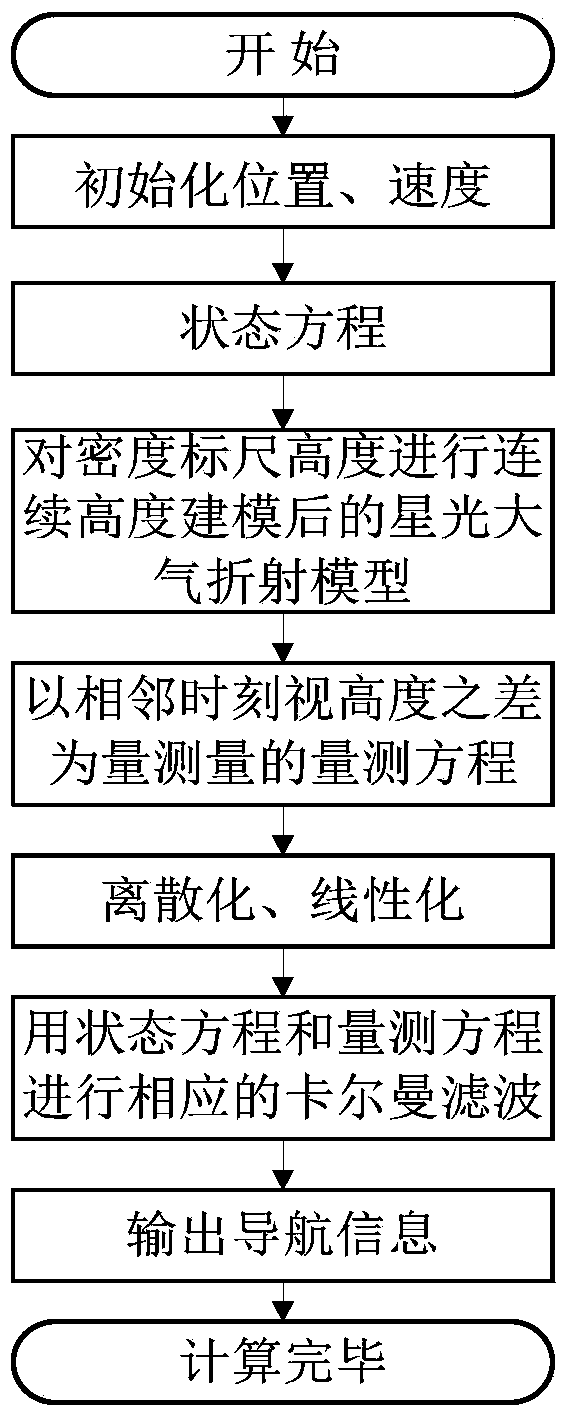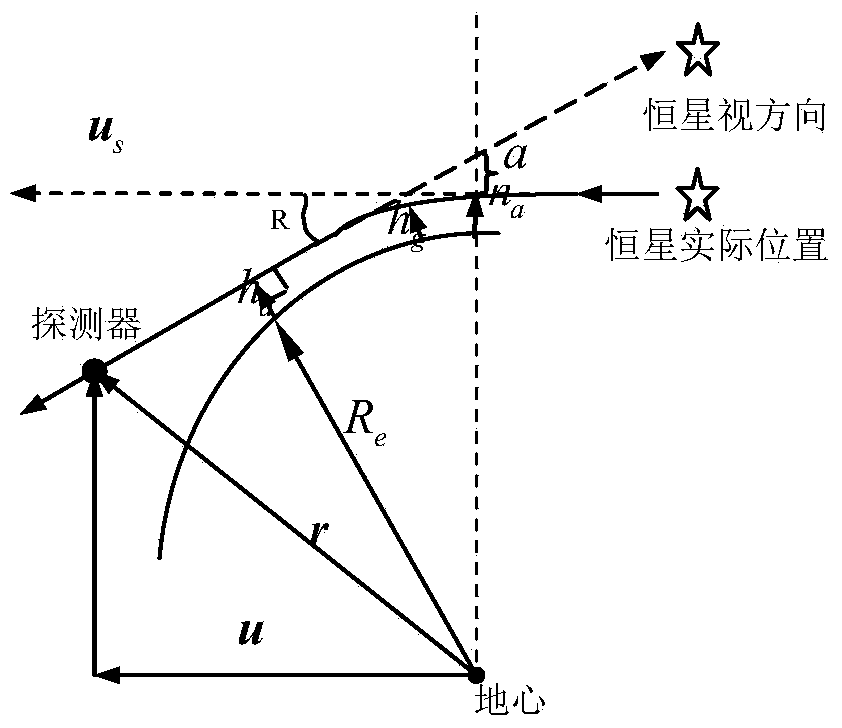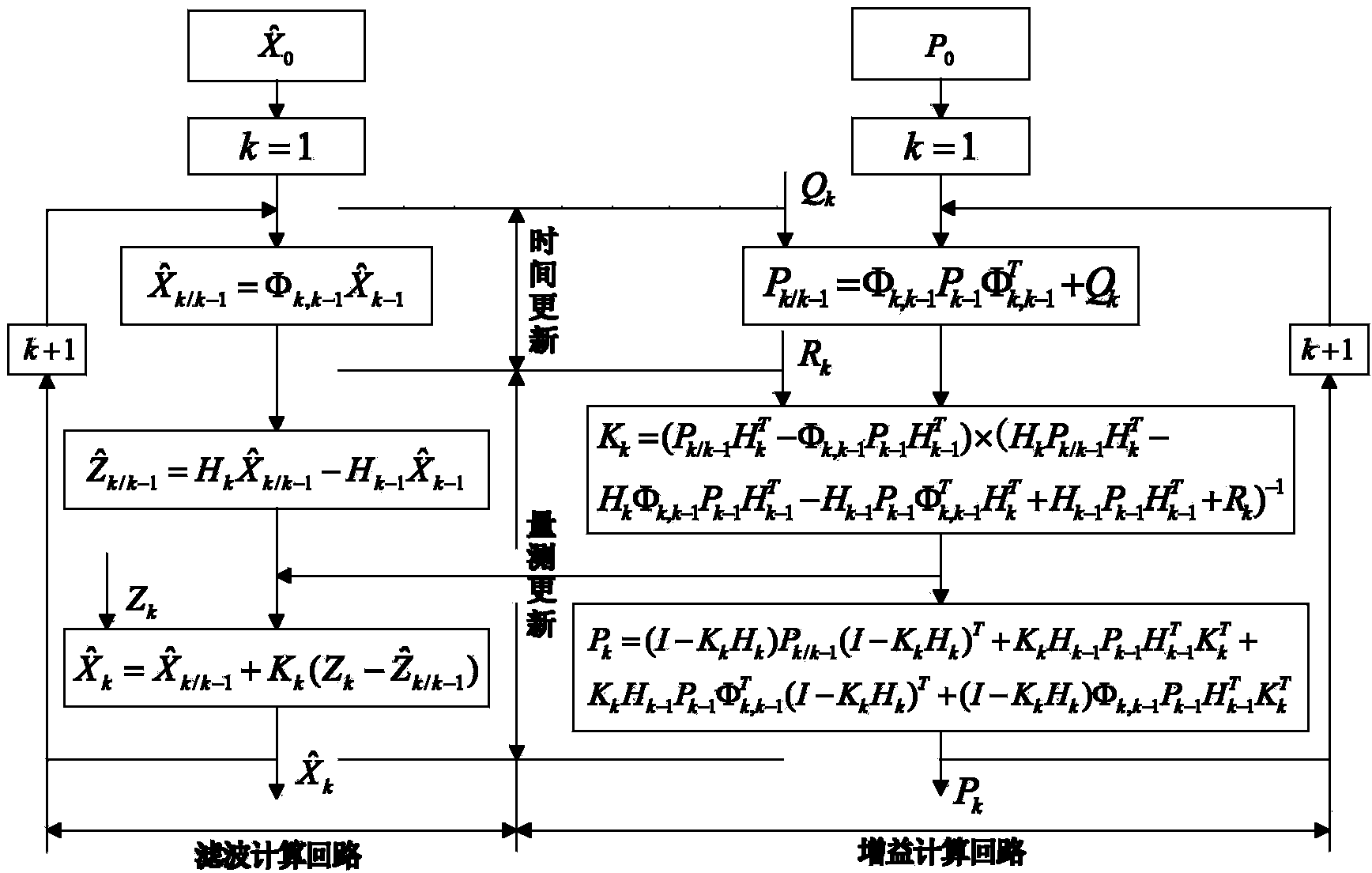Autonomous celestial navigation method for deep space probe on near-earth parking orbit
A technology for deep space probes and parking orbits, applied in the field of astronomical navigation, which can solve problems such as inability to model, failure, and influence on system navigation accuracy
- Summary
- Abstract
- Description
- Claims
- Application Information
AI Technical Summary
Problems solved by technology
Method used
Image
Examples
Embodiment Construction
[0082] Such as figure 1 Shown, the concrete implementation method of the present invention is as follows:
[0083] Step 1. Initialize the position and velocity information of the detector, and establish the state equation of the deep space detector on the near-Earth parking orbit.
[0084] Taking the earth as the main gravitational body and the gravitational force of other celestial bodies as the perturbation force as an example, initialize the position and velocity, and establish the orbital dynamics model (system state equation) according to the following equation:
[0085] The geocentric equatorial inertial coordinate system is selected, and the state equation of the detector can be expressed as:
[0086] x · = v x y ...
PUM
 Login to View More
Login to View More Abstract
Description
Claims
Application Information
 Login to View More
Login to View More - R&D
- Intellectual Property
- Life Sciences
- Materials
- Tech Scout
- Unparalleled Data Quality
- Higher Quality Content
- 60% Fewer Hallucinations
Browse by: Latest US Patents, China's latest patents, Technical Efficacy Thesaurus, Application Domain, Technology Topic, Popular Technical Reports.
© 2025 PatSnap. All rights reserved.Legal|Privacy policy|Modern Slavery Act Transparency Statement|Sitemap|About US| Contact US: help@patsnap.com



